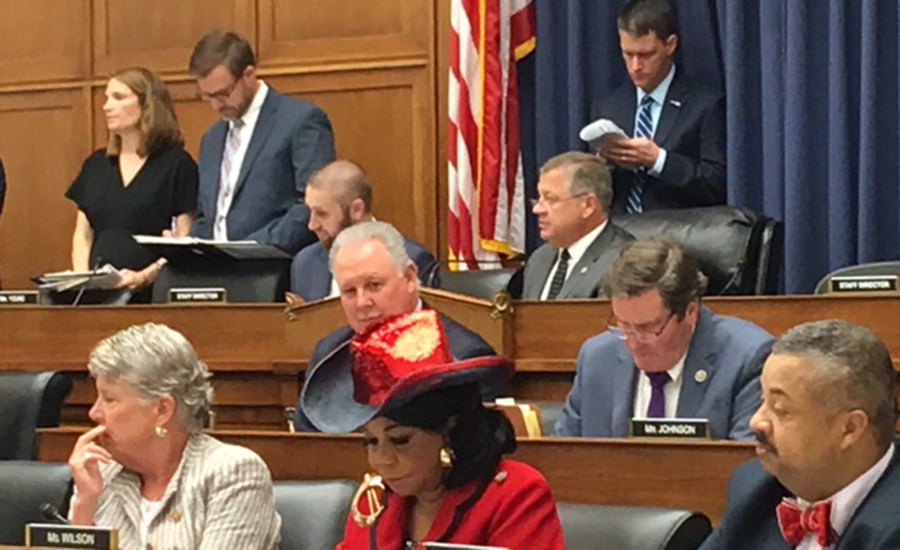Legislation to fund new Army Corps of Engineers storm and flood protection work and other projects has moved past key mileposts as House and Senate committees cleared differing water resources bills, setting the stage for floor votes.
The latest step forward came on May 23, when the House Transportation and Infrastructure Committee approved its measure, the 2018 Water Resources Development Act (WRDA), by a unanimous voice vote.
That action followed the Senate Environment and Public Works Committee's 21-0 vote one day earlier for its version, the America's Water Infrastructure Act.
Steve Hall, American Council of Engineering Companies (ACEC) vice president for government affairs, notes that, compared with the House committee's Corps-centric bill, the Senate committee's bill broadens out to also include Environmental Protection Agency water issues.
"But right now," Hall says, "process is as important as substance." He adds, "We need the House to move forward, we need the Senate to move forward, so we can get to conference and work out the details."
House committee Chairman Bill Shuster (R-Pa.) told reporters after his panel's vote that floor debate could come during the first week of June.
Susan Monteverde, American Association of Port Authorities (AAPA) vice president of government relations, says that water resources legislation has a strong chance of enactment in 2018.
Monteverde says, "WRDA is one of the few bills that people really feel will get moving, but we probably won't see it until the end of the year." She adds, "It would be nice to see it earlier, but what we're hearing is: Don't get your hopes up for anything a lot earlier than that."
A central feature of both bills is the more than $2.4 billion in federal funds they authorize to build new Corps projects. The Senate's includes six projects. The House panel added a seventh, in New Mexico, which just received its Army Chief of Engineers recommendation on May 11. The authorizations would still require congressional appropriations.
The project roster is likely to grow as the Corps completes more Chief's Reports on other projects in the months to come.
Shuster said that many committee members wanted to make changes in Clean Water Act provisions, but he and other panel leaders felt those alterations would be controversial and could slow down the bill.
He said, "I think that staying focused on [the] Corps, its mission, its projects and those things that it deals with is the way to get the water resources bill out of the House, to the Senate and have it … signed into law."
Among other provisions, Hall says ACEC was pleased to see the House bill include language calling for qualifications-based selection of engineering firms on projects financed by the EPA Drinking Water State Revolving Fund (DWSRF).
Both bills also would reauthorize the national dam safety and levee safety programs.
The House committee version would call for using all of the revenue flowing from cargo taxes for the Harbor Maintenance Trust Fund, beginning in 2029. That provision, similar to one that failed to make it into an earlier WRDA, could run into opposition from congressional appropriators, who have determined annual spending from the trust fund.
As the bill moves further, AAPA would like it to incorporate elements of a January agreement between the association and industry officials, Monteverde says.
That agreement recommends full use of harbor maintenance tax revenue and initially would direct 90% of the money to dredging to maintain channel depths. Another 8% would go to "donor ports," which collect more in harbor taxes than they receive for improvements. The remaining 2% would go to ports that handle sizable amounts of energy shipments.
WIFIA Provision Flap
EPA-related language added to the Senate bill during the May 22 markup session has stirred controversy.
The provision is based on the Securing Required Funding for Water Infrastructure Now bill, introduced by Sen. John Boozman (R-Ark.).
According to ACEC, the Associated General Contractors of America and other supporters of the Boozman plan, it would combine the EPA wastewater-treatment and drinking-water revolving funds with the four-year-old Water Infrastructure Finance and Innovation Act (WIFIA) federal loan program.
Hall says, "This is a new twist, basically, on WIFIA, to give individual water authorities this mechanism that they can package together a bunch of projects into a single financing document."
But the American Water Works Association (AWWA), Association of Metropolitan Water Agencies and Water Environment Federation strongly oppose the Boozman plan. Tommy Holmes, AWWA legislative director, says, "This is a virus being introduced into WIFIA."
It would allow state infrastructure finance agencies—but apparently not municipal water agencies—to have the $100,000 WIFIA application fee waived and require their loan applications to be processed within 180 days.
The critics said in a May 10 letter to the Senate committee that the proposal would create an "uneven playing field" and set "preferential application, evaluation, and financing rules for state SRF agencies that applicants to the original WIFIA program would not have an opportunity to access."
The Boozman plan isn't in the House committee version.
ACEC's Hall says, "I have to think at the end of the day we can work out whatever the differences are."



